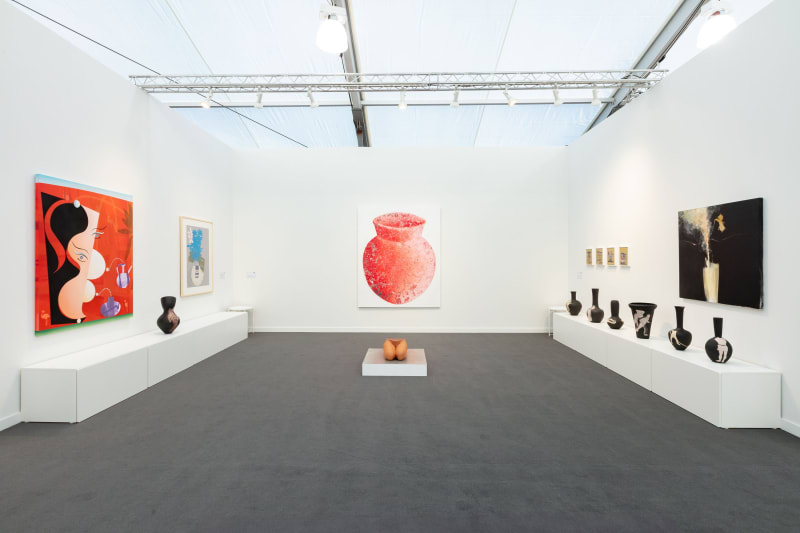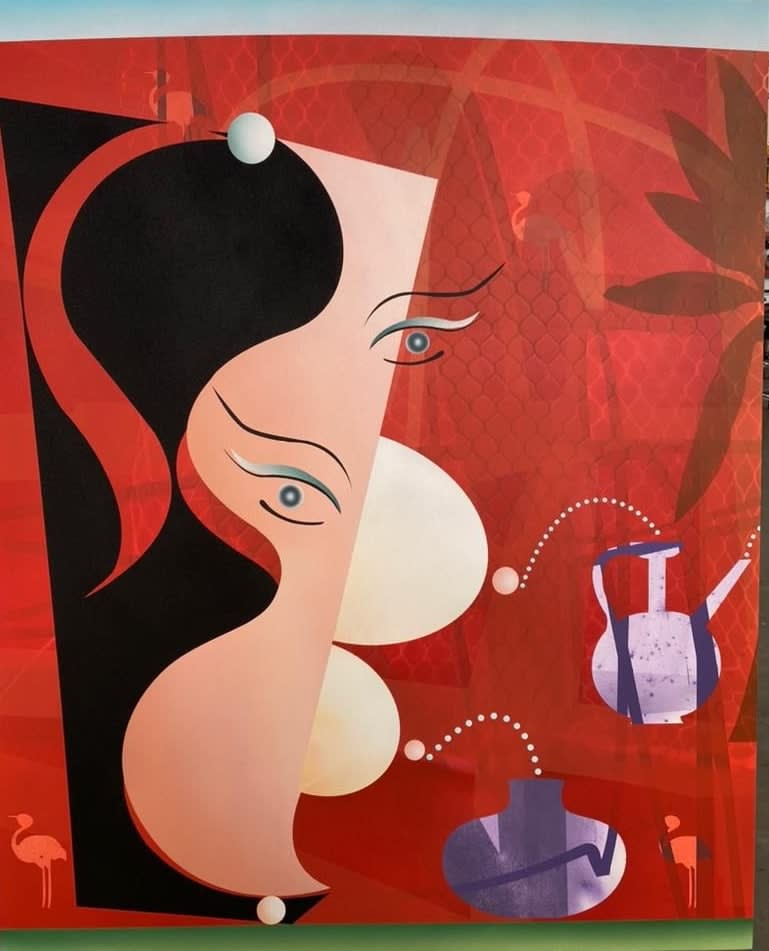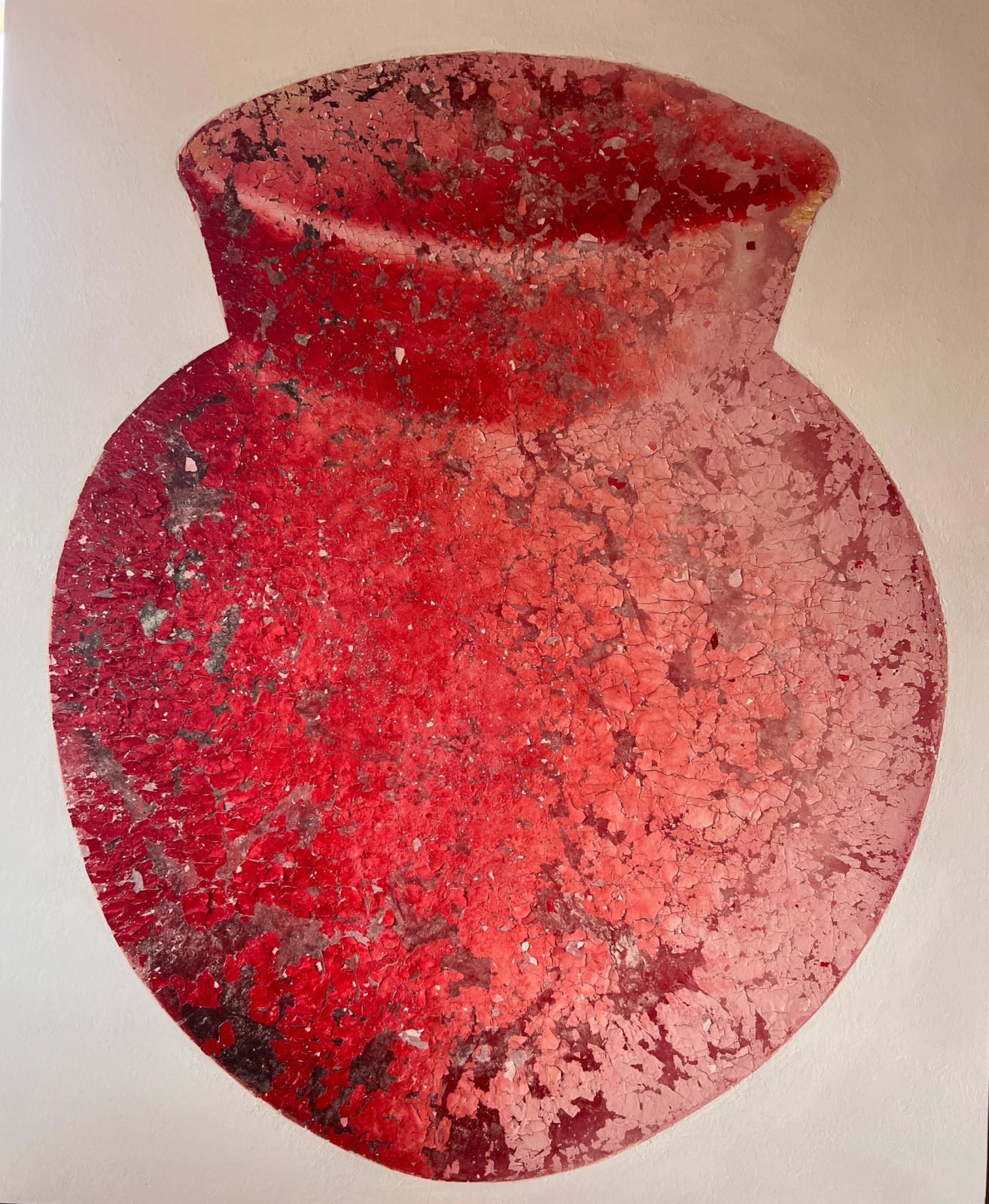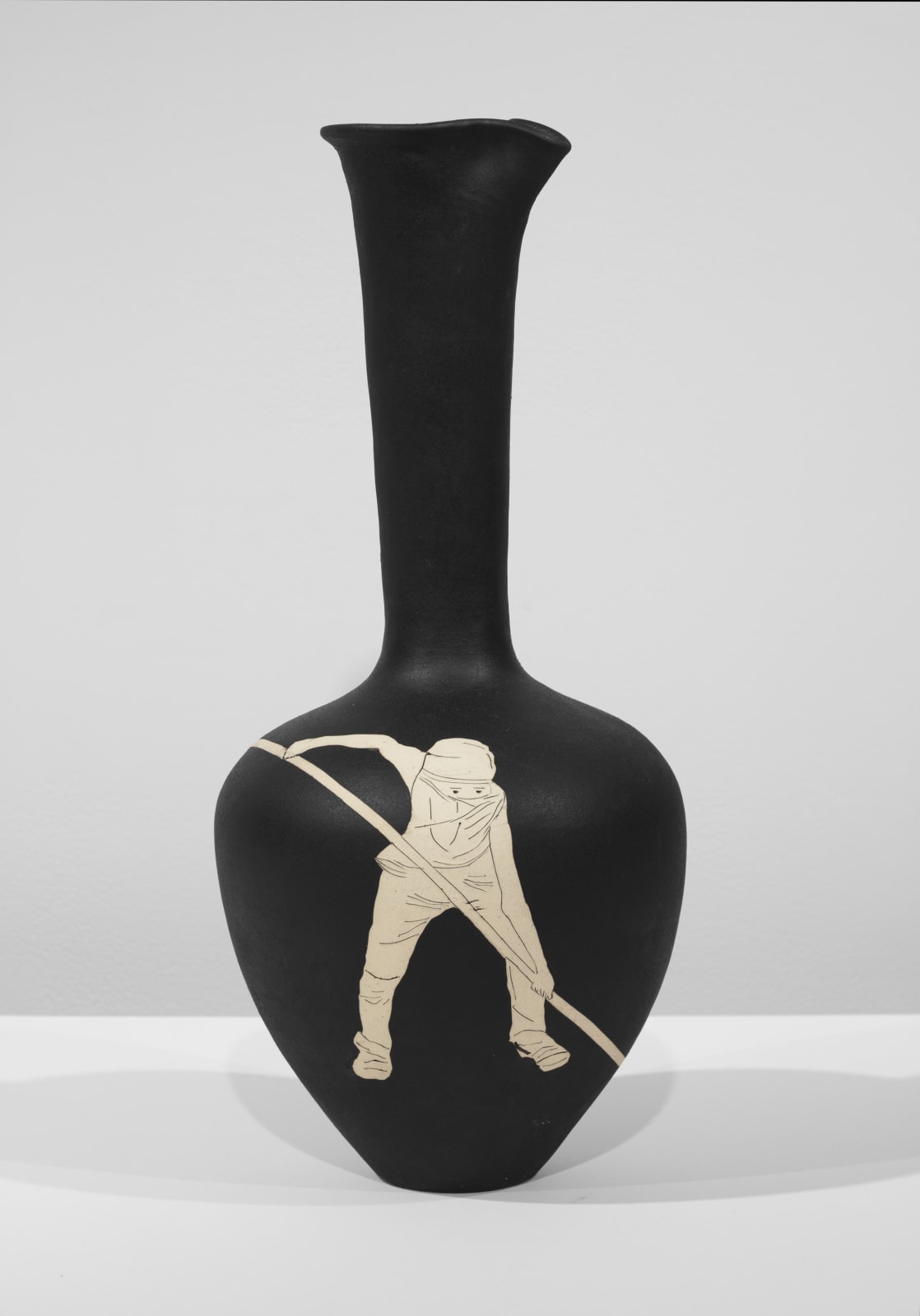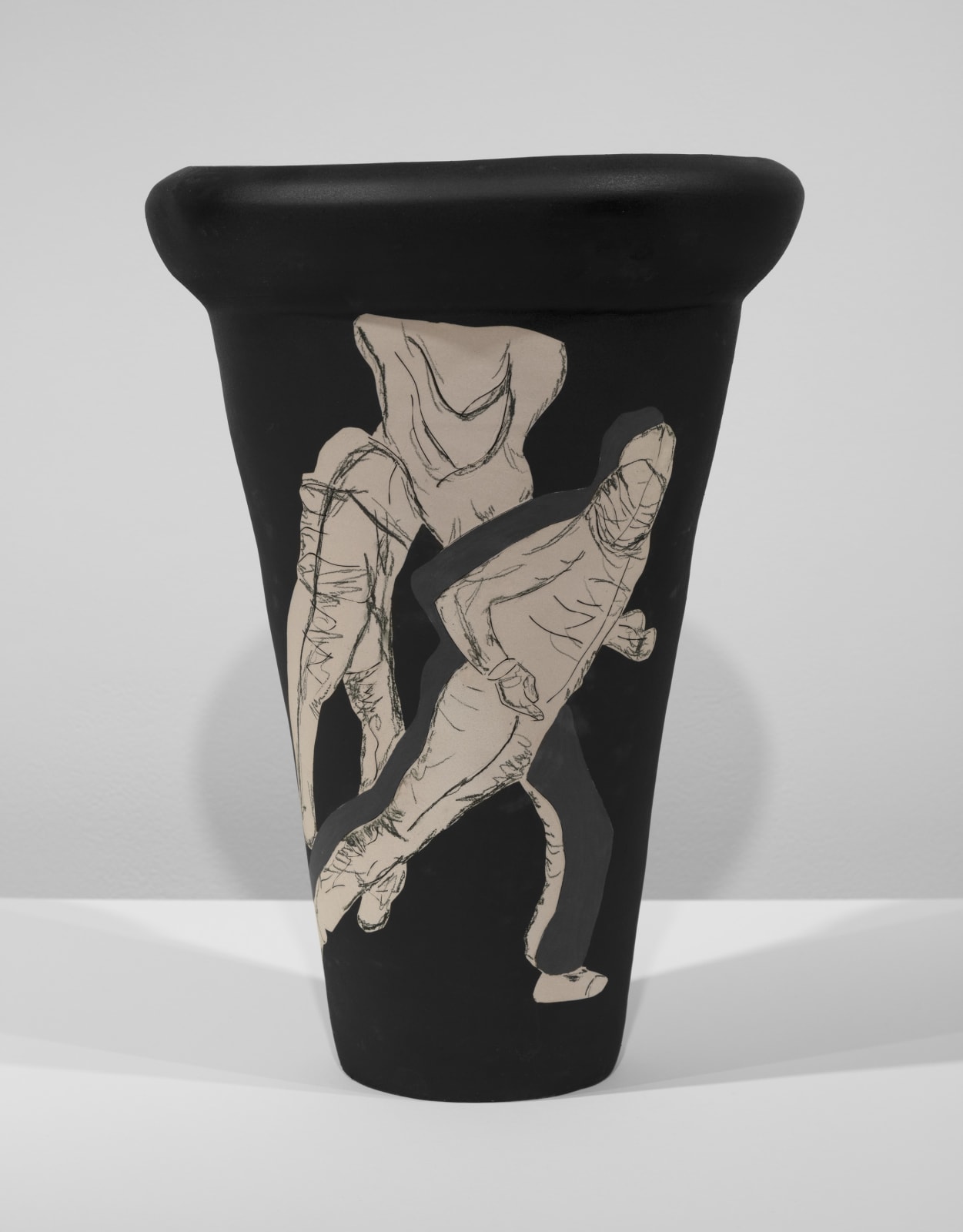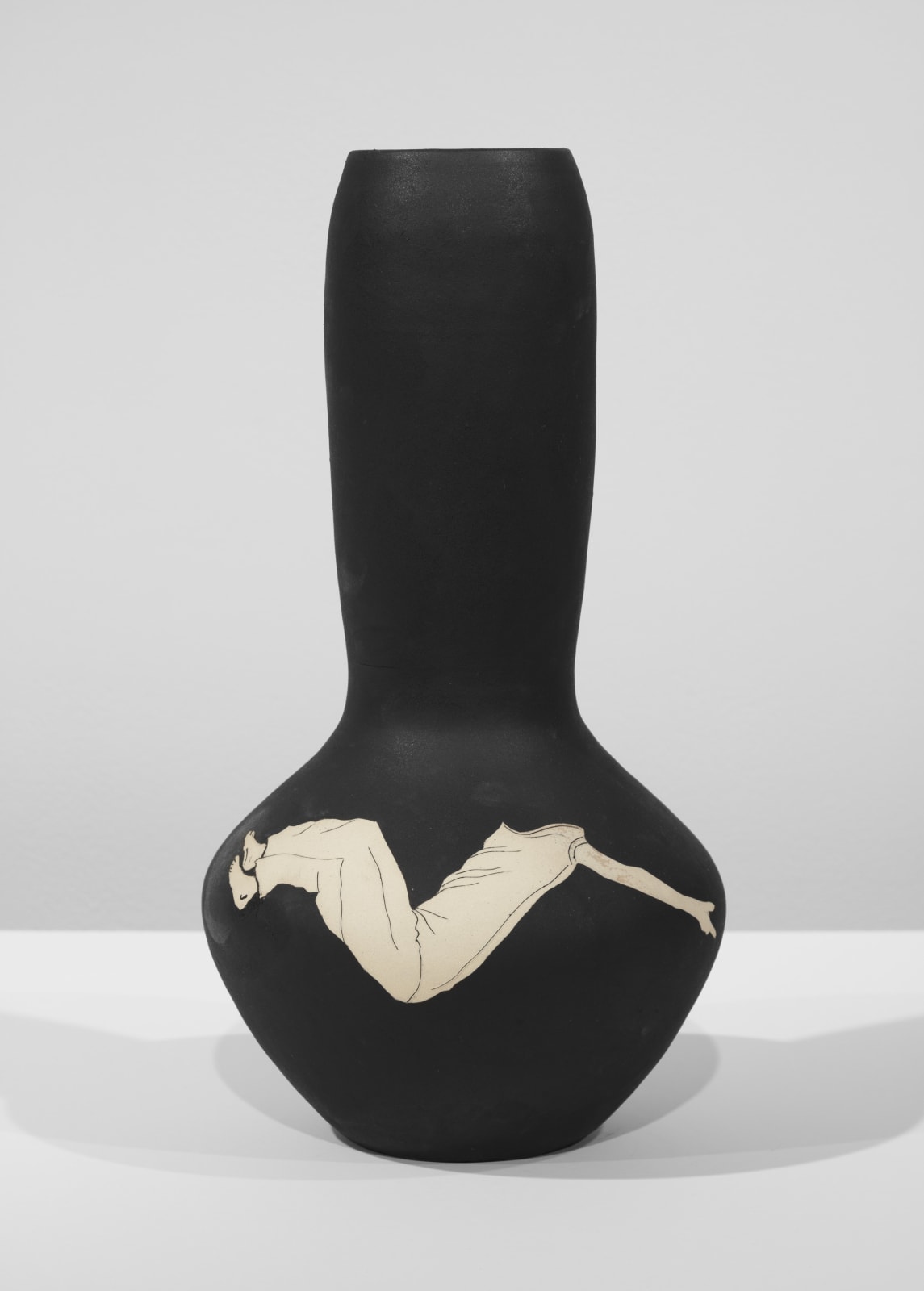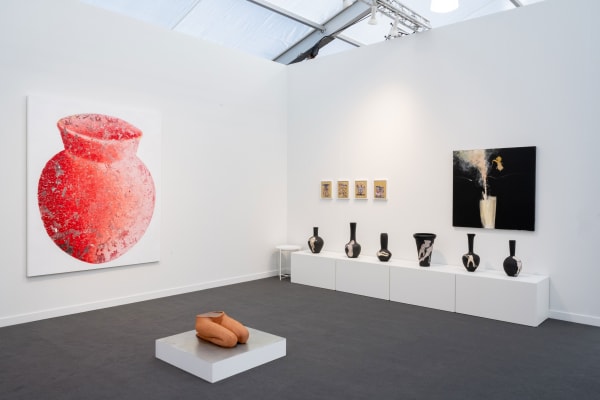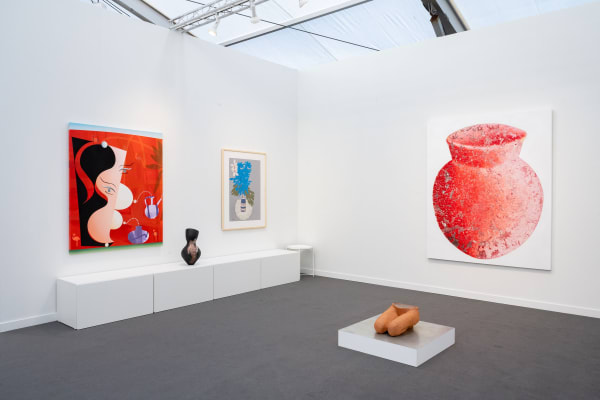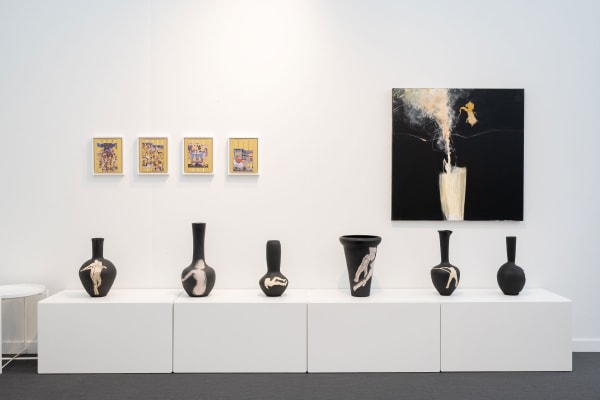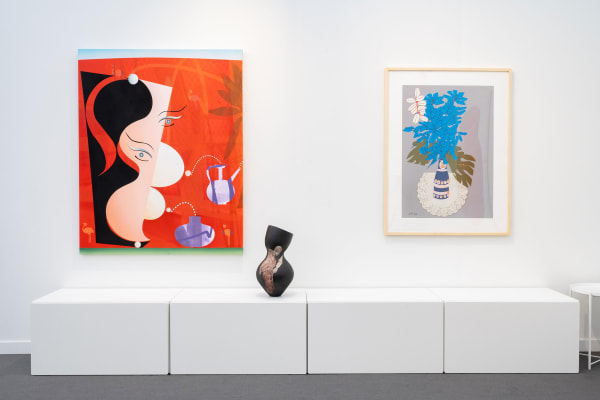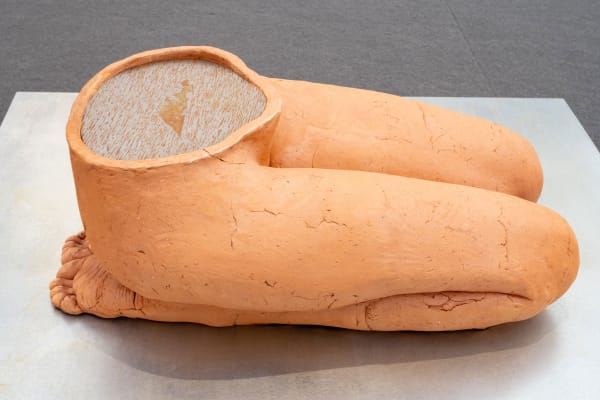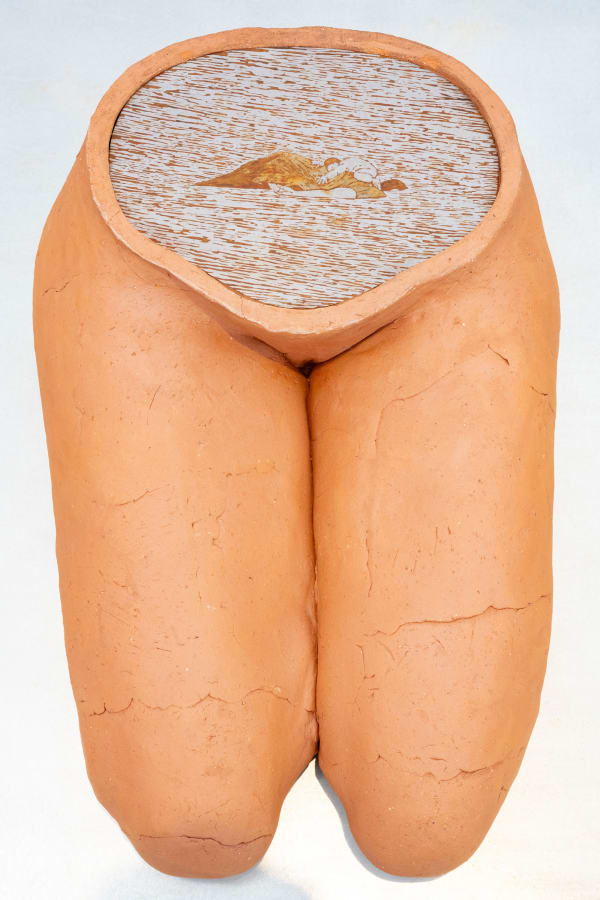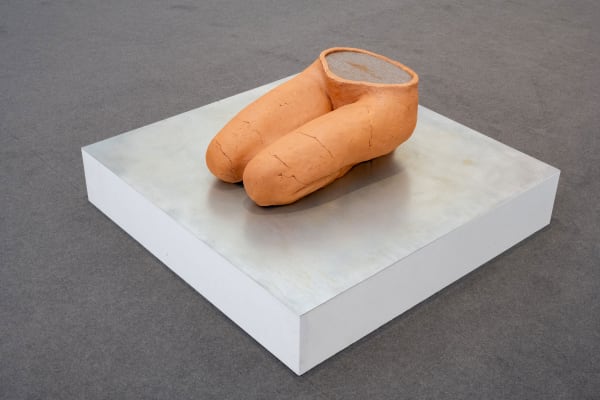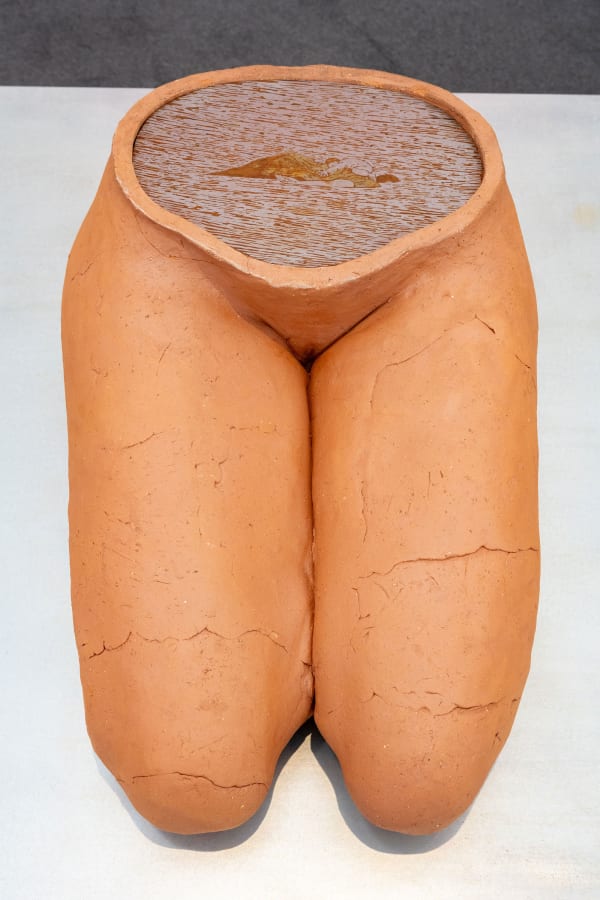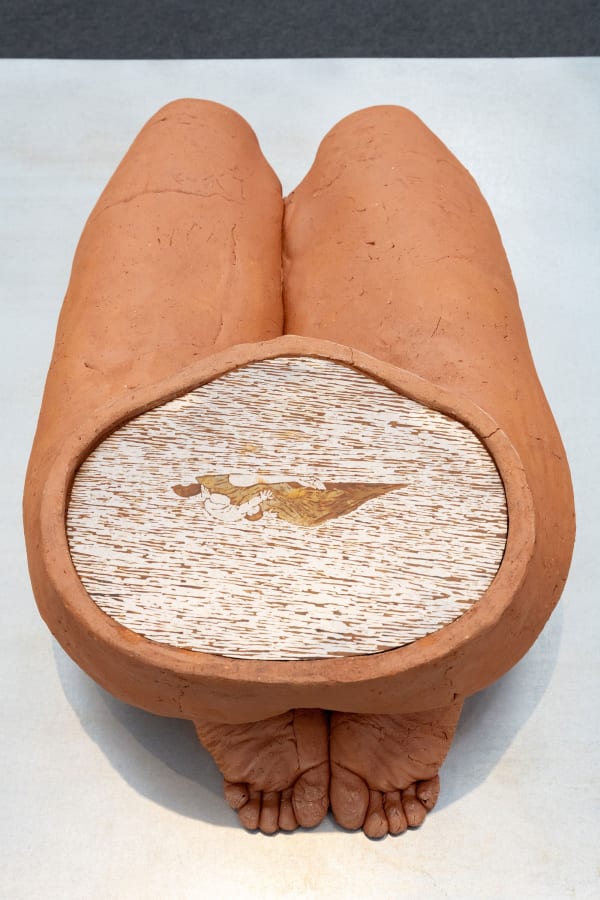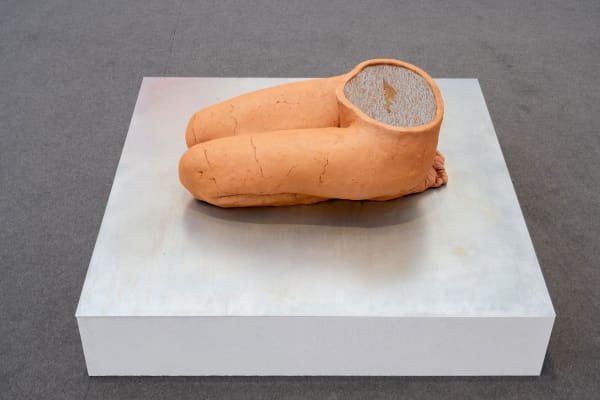Frieze Los Angeles 2025 | Group Presentation: Los Angeles
A group presentation of works by Farhad Moshiri (b. 1963, Shiraz Iran—d. 2024, Tehran, Iran), Farideh Lashai (b. 1944, Rasht, Iran—d. 2013, Tehran, Iran), Parvaneh Etemadi (b. 1948, Tehran, Iran), Andisheh Avini (b. 1974, New York), Reza Aramesh (b. 1970, Ahwaz, Iran), Hoda Kashiha (b. 1986, Tehran, Iran), and Roksana Pirouzmand (b. 1990, Yazd, Iran) at Frieze Los Angeles 2025.
Booth: B18
Date: February 20 - February 23, 2025
Preview: Feb 20, 10 AM - 7 PM,
Feb 21, 11 AM - 7 PM
Location: Los Angeles, USA
Address: 3027 Airport Avenue, Santa Monica, 90405
-
 Installation view of a group presentation of works by Farhad Moshiri, Farideh Lashai, Parvaneh Etemadi, Andisheh Avini, Reza Aramesh, Hoda Kashiha and Roksana Pirouzmand at Frieze Los Angeles 2025.
Installation view of a group presentation of works by Farhad Moshiri, Farideh Lashai, Parvaneh Etemadi, Andisheh Avini, Reza Aramesh, Hoda Kashiha and Roksana Pirouzmand at Frieze Los Angeles 2025. -
 Installation view of a group presentation of works by Farhad Moshiri, Farideh Lashai, Parvaneh Etemadi, Andisheh Avini, Reza Aramesh, Hoda Kashiha and Roksana Pirouzmand at Frieze Los Angeles 2025.
Installation view of a group presentation of works by Farhad Moshiri, Farideh Lashai, Parvaneh Etemadi, Andisheh Avini, Reza Aramesh, Hoda Kashiha and Roksana Pirouzmand at Frieze Los Angeles 2025. -
 Installation view of a group presentation of works by Farhad Moshiri, Farideh Lashai, Parvaneh Etemadi, Andisheh Avini, Reza Aramesh, Hoda Kashiha and Roksana Pirouzmand at Frieze Los Angeles 2025.
Installation view of a group presentation of works by Farhad Moshiri, Farideh Lashai, Parvaneh Etemadi, Andisheh Avini, Reza Aramesh, Hoda Kashiha and Roksana Pirouzmand at Frieze Los Angeles 2025. -
 Installation view of a group presentation of works by Farhad Moshiri, Farideh Lashai, Parvaneh Etemadi, Andisheh Avini, Reza Aramesh, Hoda Kashiha and Roksana Pirouzmand at Frieze Los Angeles 2025.
Installation view of a group presentation of works by Farhad Moshiri, Farideh Lashai, Parvaneh Etemadi, Andisheh Avini, Reza Aramesh, Hoda Kashiha and Roksana Pirouzmand at Frieze Los Angeles 2025. -
 Installation view of a group presentation of works by Farhad Moshiri, Farideh Lashai, Parvaneh Etemadi, Andisheh Avini, Reza Aramesh, Hoda Kashiha and Roksana Pirouzmand at Frieze Los Angeles 2025.
Installation view of a group presentation of works by Farhad Moshiri, Farideh Lashai, Parvaneh Etemadi, Andisheh Avini, Reza Aramesh, Hoda Kashiha and Roksana Pirouzmand at Frieze Los Angeles 2025. -
 Installation view of a group presentation of works by Farhad Moshiri, Farideh Lashai, Parvaneh Etemadi, Andisheh Avini, Reza Aramesh, Hoda Kashiha and Roksana Pirouzmand at Frieze Los Angeles 2025.
Installation view of a group presentation of works by Farhad Moshiri, Farideh Lashai, Parvaneh Etemadi, Andisheh Avini, Reza Aramesh, Hoda Kashiha and Roksana Pirouzmand at Frieze Los Angeles 2025. -
 Installation view of a group presentation of works by Farhad Moshiri, Farideh Lashai, Parvaneh Etemadi, Andisheh Avini, Reza Aramesh, Hoda Kashiha and Roksana Pirouzmand at Frieze Los Angeles 2025.
Installation view of a group presentation of works by Farhad Moshiri, Farideh Lashai, Parvaneh Etemadi, Andisheh Avini, Reza Aramesh, Hoda Kashiha and Roksana Pirouzmand at Frieze Los Angeles 2025. -
 Installation view of a group presentation of works by Farhad Moshiri, Farideh Lashai, Parvaneh Etemadi, Andisheh Avini, Reza Aramesh, Hoda Kashiha and Roksana Pirouzmand at Frieze Los Angeles 2025.
Installation view of a group presentation of works by Farhad Moshiri, Farideh Lashai, Parvaneh Etemadi, Andisheh Avini, Reza Aramesh, Hoda Kashiha and Roksana Pirouzmand at Frieze Los Angeles 2025. -
 Installation view of a group presentation of works by Farhad Moshiri, Farideh Lashai, Parvaneh Etemadi, Andisheh Avini, Reza Aramesh, Hoda Kashiha and Roksana Pirouzmand at Frieze Los Angeles 2025.
Installation view of a group presentation of works by Farhad Moshiri, Farideh Lashai, Parvaneh Etemadi, Andisheh Avini, Reza Aramesh, Hoda Kashiha and Roksana Pirouzmand at Frieze Los Angeles 2025. -
 Installation view of a group presentation of works by Farhad Moshiri, Farideh Lashai, Parvaneh Etemadi, Andisheh Avini, Reza Aramesh, Hoda Kashiha and Roksana Pirouzmand at Frieze Los Angeles 2025.
Installation view of a group presentation of works by Farhad Moshiri, Farideh Lashai, Parvaneh Etemadi, Andisheh Avini, Reza Aramesh, Hoda Kashiha and Roksana Pirouzmand at Frieze Los Angeles 2025. -
 Installation view of a group presentation of works by Farhad Moshiri, Farideh Lashai, Parvaneh Etemadi, Andisheh Avini, Reza Aramesh, Hoda Kashiha and Roksana Pirouzmand at Frieze Los Angeles 2025.
Installation view of a group presentation of works by Farhad Moshiri, Farideh Lashai, Parvaneh Etemadi, Andisheh Avini, Reza Aramesh, Hoda Kashiha and Roksana Pirouzmand at Frieze Los Angeles 2025.
Dastan announces its participation at Frieze Los Angeles 2025 with a booth that brings together works from the celebrated late artist, Farhad Moshiri (b. 1963, Shiraz Iran—d. 2024, Tehran, Iran), Farideh Lashai (b. 1944, Rasht, Iran—d. 2013, Tehran, Iran), Parvaneh Etemadi (b. 1948, Tehran, Iran), Andisheh Avini (b. 1974, New York), Reza Aramesh (b. 1970, Ahwaz, Iran), Hoda Kashiha (b. 1986, Tehran, Iran), and Roksana Pirouzmand (b. 1990, Yazd, Iran). The roots for the current presentation go back to an encounter with a series of paintings by late Iranian artist Mahmoud Javadipour (b. 1920, Tehran, Iran—d. 2012, Munich). An avid traveler and explorer who visited many regions of Iranian and documented traditional crafts, Javadipour painted many configurations of clay jars and traditional Iranian ceramic workshops, many of which remind one of the poetry of Omar Khayyam. I saw at a potter's shop one dusk of day, Two thousand voiced but silent pots of clay; One vessel then on sudden cried aloud: “Where are they—potter, seller, buyer—pray?”* —Khayyam, Quatrain 117 As so, while the design has been heavily influenced by Javadipour’s compositions, the underlying idea has been inspired by the worldview of Omar Khayyam, especially his employing of an iconic set elements known today as Earthenware Imagery, rooted in the image of the Creator as the Potter and the maker of man from earth. Omar Khayyam (1048-1131) was a Persian polymath who excelled in various fields, leaving behind a legacy as a philosopher, astronomer, and poet. While Khayyam’s scientific achievements were remarkable, he is best known in the Western world for his poetry. His poetry, particularly in the Rubaiyat, frequently uses the imagery of earthenware to explore themes of creation, existence, and mortality. This powerful imagery of the potter as creator and human life as fragile vessels forms the conceptual core of Dastan’s presentation, which brings together a diverse selection of works by prominent Iranian artists, each reflecting engaging with Khayyam’s themes in their unique artistic language. The exhibition creates a dialogue between past and present, mind and material, being and memory, reflecting on timeless questions of life, death, mortality, legacy, and the human condition. Mind fumes pondering the appearance of its beauty. Heart heaves chasing its sensuous curvature. The potter of such delicate frame, Makes and breaks it as if in a game.** —Khayyam, Quatrain 115 * Saidi, Ahmad. “Ruba'Iyat of Omar Khayyam”. Asian Humanities Press. 2001: Berkeley, CA. ** Translated by Sohrab Mahdaviinfo@dastangallery.com@dastan.artgallerywww.dastan.gallerySanta Monica AirportFeb 20 - 23, 2025Booth: B18Group Presentation
